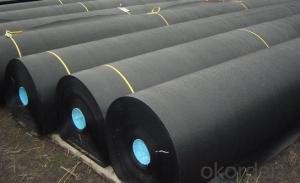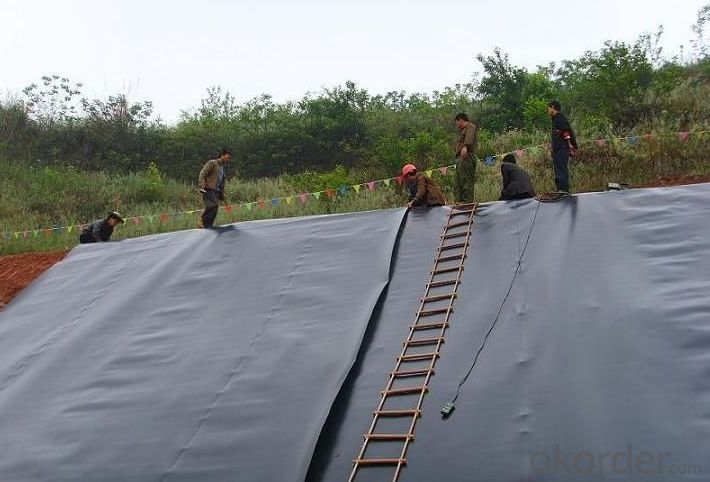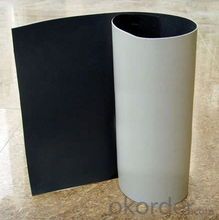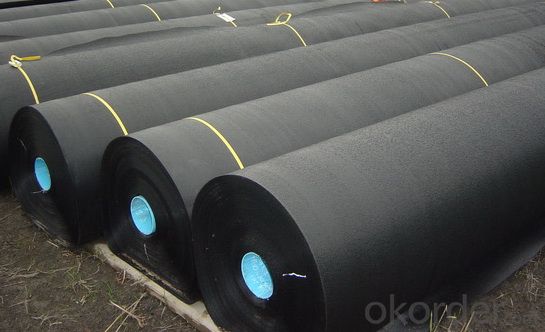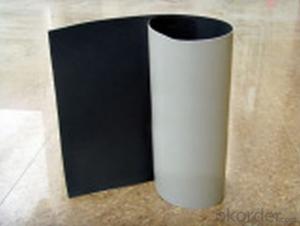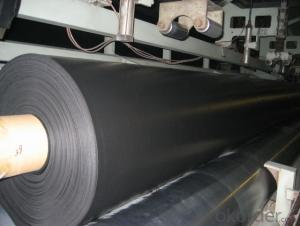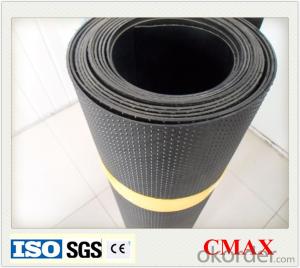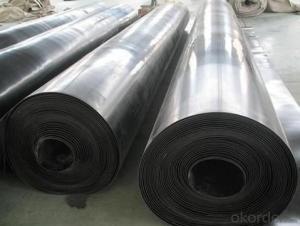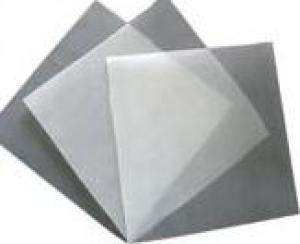High Density Polyethylene (HDPE) 1.5mm LDPE Geomembrane for Swimming Pool
- Loading Port:
- China main port
- Payment Terms:
- TT OR LC
- Min Order Qty:
- 10000 m²
- Supply Capability:
- 5000000 m²/month
OKorder Service Pledge
OKorder Financial Service
You Might Also Like
1.5mm LDPE Geomembrane, Find Details about LDPE Geomembrane and Make an Inquiry for Geomembrane at OKorder.com.
1. LDPE Geomembrane Specifications
1) Thickness : 0.15mm - 4.0mm.
2) Width : Within 8 m (1m-8m).
3) Length : 50m-100m/roll (as request).
4) Material : HDPE,( LDPE, LLDPE, PVC, EVA, etc ).
5) Color : Black , white , red , blue , or as required.
6) Optional surface : Textued(one or two side) or smooth surface.
7) Certificate:CE/ISO9001,14001
2. LDPE Geomenbrane Features
Good mechanical properties, high tear strength, deformation and adaptable, puncture resistance, anti-aging, anti-ultraviolet-resistant, Anti oil and salt, pH, anti-corrosion, high temperature-resistant, non-toxic, long service life. water, drainage, seepage, the good effect of moisture, width, thickness of the full range of specifications and low cost, simple construction.
3. LDPE Geomembrane Applications
1) Environmental protection, sanitation (such as solid waste landfills, sewage treatment plants, power plants Chi-conditioning, industrial, hospital solid waste, etc.) .
2) Water (such as rivers, lakes and reservoirs of the anti-dam, plugging, reinforcement of the canal seepage, the vertical wall of the heart, slope protection, etc.).
3) Municipal Engineering (subway, on the ground floor of the building, planted roof, the roof garden of anti-seepage, sewage pipes lining, etc.).
4) Landscape (man-made lake, river, reservoir, golf courses reservoirs of the substrate, slope protection, green lawn of the waterproof moisture, etc.).
5) Petrochemical (chemical plants, oil refineries, gas storage tanks of the anti-chemical reaction tanks, sedimentation tanks of the lining, etc.).
6) Mining (washing and pool heap leaching, the ash-field, dissolved, precipitation, the yard, the tailings seepage substrates, etc.) .
4. HDPE Geomembrane Show

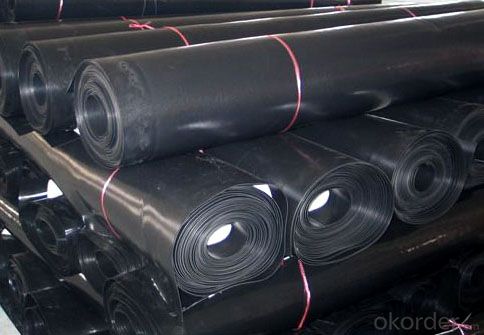


LDPE Geomembrane RFQ:
1. What are we supplying?
We are specialized in producing .geotextile , geocell, geogrid, geomembrane
2. How Many years experience do we have?
We have been exported to more than 15 countries in the past 10 years.
3. How long do we usually reply your request?
We always reply our customer within 12 hours.
If you want to find more details about LDPE Geomembrane, you could make an Inquiry in okorder.com. Okorder.com provides you the products with best price and quality!
- Q: How do geomembranes contribute to the preservation of wetlands?
- Geomembranes contribute to the preservation of wetlands by acting as a barrier to prevent contaminants from seeping into the wetland ecosystem. They are used to line ponds, lakes, and other water bodies, effectively containing pollutants and preventing them from infiltrating the wetland soil and water. This helps maintain the ecological balance, prevents the loss of biodiversity, and ensures the long-term health and sustainability of wetlands.
- Q: What are the advantages of using geomembranes in coastal and marine protection projects?
- There are several advantages of using geomembranes in coastal and marine protection projects. Firstly, geomembranes provide an effective barrier against water, preventing erosion and protecting coastal structures from damage caused by waves, tides, and currents. Secondly, geomembranes are highly durable and resistant to UV radiation, chemicals, and biological degradation, ensuring long-term effectiveness in marine environments. Additionally, geomembranes are easy to install and can be customized to fit any shape or size, allowing for flexibility in design and adaptation to specific project needs. Lastly, geomembranes are a cost-effective solution compared to traditional methods of coastal protection, as they require less maintenance and have a longer lifespan, resulting in reduced overall project costs.
- Q: What are the permeability properties of geomembranes?
- Geomembranes have excellent impermeability properties, meaning they are highly resistant to the passage of liquids and gases. They act as a barrier, preventing the movement of water, chemicals, and other substances through the material. This impermeability makes geomembranes an effective solution for applications such as containment of hazardous waste, fluid containment in landfills, and lining of reservoirs or ponds.
- Q: How do geomembranes prevent water seepage in canal lining?
- Geomembranes prevent water seepage in canal lining by acting as a barrier between the water and the surrounding soil. These impermeable synthetic membranes are installed in the canal to create a watertight seal, preventing water from seeping through the canal walls or base. This ensures that the water remains within the canal, optimizing water conservation and minimizing the risk of soil erosion or contamination.
- Q: Are geomembranes resistant to UV degradation?
- Yes, geomembranes are resistant to UV degradation. They are specifically designed to withstand exposure to sunlight and UV radiation without significant deterioration or damage.
- Q: What are the typical thicknesses of geomembranes?
- The typical thicknesses of geomembranes vary depending on the specific application, but they generally range from 0.5 to 2.5 millimeters.
- Q: What is the code for check and acceptance of reinforced concrete project ?
- Article 2.1.1 Materials of the template and holder shall be steel, wood or new materials. The steel should be consistent with the No. 3 steel standard in the "Ordinary carbon steel grades and general technical conditions" (GB700-79). The timber should be consistent with the selection criterion of bearing structures under Code for construction quality acceptance of timber (GBJ206-83) , the tree species can be selected according to regional conditions, and the material grade shall not be under Ⅲ grade. Article 2.1.2 The template and holder must be in accordance with the following provisions: First,ensure the shape, size and position of engineering structures and components in each part is correct. Second, have enough strength, rigidity and stability, to withstand the weight and lateral pressure of newly poured concrete, as well as load generated in the process of construction.Third, simple structure, convenient assembly and disassembly, convenient for reinforcing bar colligation and installation and concrete pouring and curing process. Fourth, tight template joints without spillage. Article 2.1.3 The design, fabrication and construction of composite steel template, large formwork, climbing form and so on shall be in conformity with the relevant professional standards. Article 2.1.4 The contact surface of template and concrete shall be coated with separant. Do not use separant which will hinder the construction of decoration project. Article 2.1.5 The templates and holders shall be properly maintained, and the steel formwork and steel supports shall be prevented from corrosion.
- Q: Is HDPE geomembrane the same as polyethylene polypropylene fiber?
- Of course it isn't. They are totally different products. HDPE geomembrane, also known as high density polyethylene,is a single-layered plastic sheet, mainly used for the anti-seepage projects, such as refuse landfills, tailings treatment plants, sewage treatment tanks, etc. Polyethylene polypropylene fiber is a multi-layered composite waterproofing membrane, and its raw materials are PP non-woven fabric and polyethylene. It is mainly used in moistureproof and waterproof projects, such as roof, wall, toilet, basement, refregeration house, bridge, pool, underground pipeline, etc. These two products are of different raw materials, molecular structures and use. Therefore, they are not the same.
- Q: What are the requirements for geomembranes used in potable water applications?
- The requirements for geomembranes used in potable water applications include being made from materials that are FDA-approved and meet drinking water standards, having low permeability to prevent leakage, being resistant to chemicals and UV degradation, and having high tensile strength to withstand installation and long-term use. Additionally, they should be flexible to accommodate ground movement and have a smooth surface to prevent the growth of bacteria and other microorganisms.
- Q: What is 3m film?
- 3M architectural glass film including the 3M insulation film, the 3M explosion-proof membrane and the decorative glass film Fasara of 3M. 3M architectural glass film family can make buildings more energy efficient, more comfortable, healthier, safer and more beautiful. As early as 1966, the 3M apply for the world's first window film patent. Now, 3M integrates the polyester material, the coated ultra-fine, the thin film technology, polishing and viscose these five core technology, through innovation, it develops series of glass film, being a world leader in film technology.
Send your message to us
High Density Polyethylene (HDPE) 1.5mm LDPE Geomembrane for Swimming Pool
- Loading Port:
- China main port
- Payment Terms:
- TT OR LC
- Min Order Qty:
- 10000 m²
- Supply Capability:
- 5000000 m²/month
OKorder Service Pledge
OKorder Financial Service
Similar products
Hot products
Hot Searches
Related keywords





